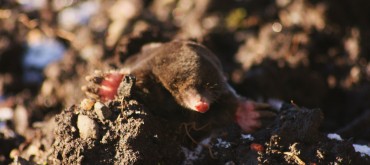We have been experiencing quite the wavering weather pattern the past couple of weeks! Humid mornings, sporadic downpours followed by cool temperatures for a few hours, as well as high heat in the afternoon with relatively warm nights. How does this fluctuating weather fare with your lawn? Our lawns are made up predominantly of cool season plants (including those that are also growing in your garden), meaning they grow best and are much healthier in cooler temperatures over high heat. This is quite noticeable as our lawns begin rapidly growing in the spring which we discussed lots on in earlier postings, and can also be observed when we get further into our fall season.
Given the fact that our lawn’s prefer cool season weather over high heat is a large reason why we perform our renovation services such as aerations and overseeding in the spring and fall only. During the summer months, the lawn is under quite a bit of stress which automatically makes it more susceptible to competition from various weeds and diseases. By disturbing the lawn at that fragile time of year, it can have a substantial negative affect to the lawn’s overall health in the summer, causing an even lower resilience percentage to its stressors. We have noticed in our office recently that many new customers are mentioning their attempts to seed any bare areas and have experienced poor results and are unsure why. If at any point the grass seed dries out on the lawn in between waterings, it significantly lowers the chance of successful germination. So unless you plan to sit beside your grass seed with your hose, watering it multiple times a day, we suggest waiting until the weather is cooler so the seeds can stay moist for longer and require less frequent waterings for success.
As you may already know, we always like to ask our cusomers how often they water their lawn during the year even when it rains. The most common answer we receive back is ‘oh it rained this week so I skipped watering’. But did your lawn retrieve its full one inch of water during that rainfall for the week? During weeks where we have sporadic rain, it is important to pay attention to the length of time it rained for. A five minute downpour, even though it may look like a lot of rain, does not guarantee your lawn was able to absorb everything or reach a full inch of precipitation. If the rainfall lasts at a steady rate for the majority of the day or even for a few hours consistently, it will be much more likely that all the water will have been absorbed, and your lawn will be in a safer, more satisfied state going into the warmer days with high heat. If you possess an automatic irrigation system, there are rain sensor components that can be installed that monitor the rainfall,and will automatically adjust your system based on how much the lawn has already received from mother nature.
As we continue to make our way through the summer please remember that our main focus right now is maintaining the lawn best we can by keeping up with a regular fertilizer schedule, deep and infrequent watering, and frequent mowing no shorter than 3 inches. Keeping the grass blades set high will ensure more shade is provided to the soil keeping it cooler, and your grass (as you now know), happier.
If you have any additional questions about your lawn’s condition throughout this fluctuating weather, feel free to reach out to one of our team members for some expert advice anytime.





